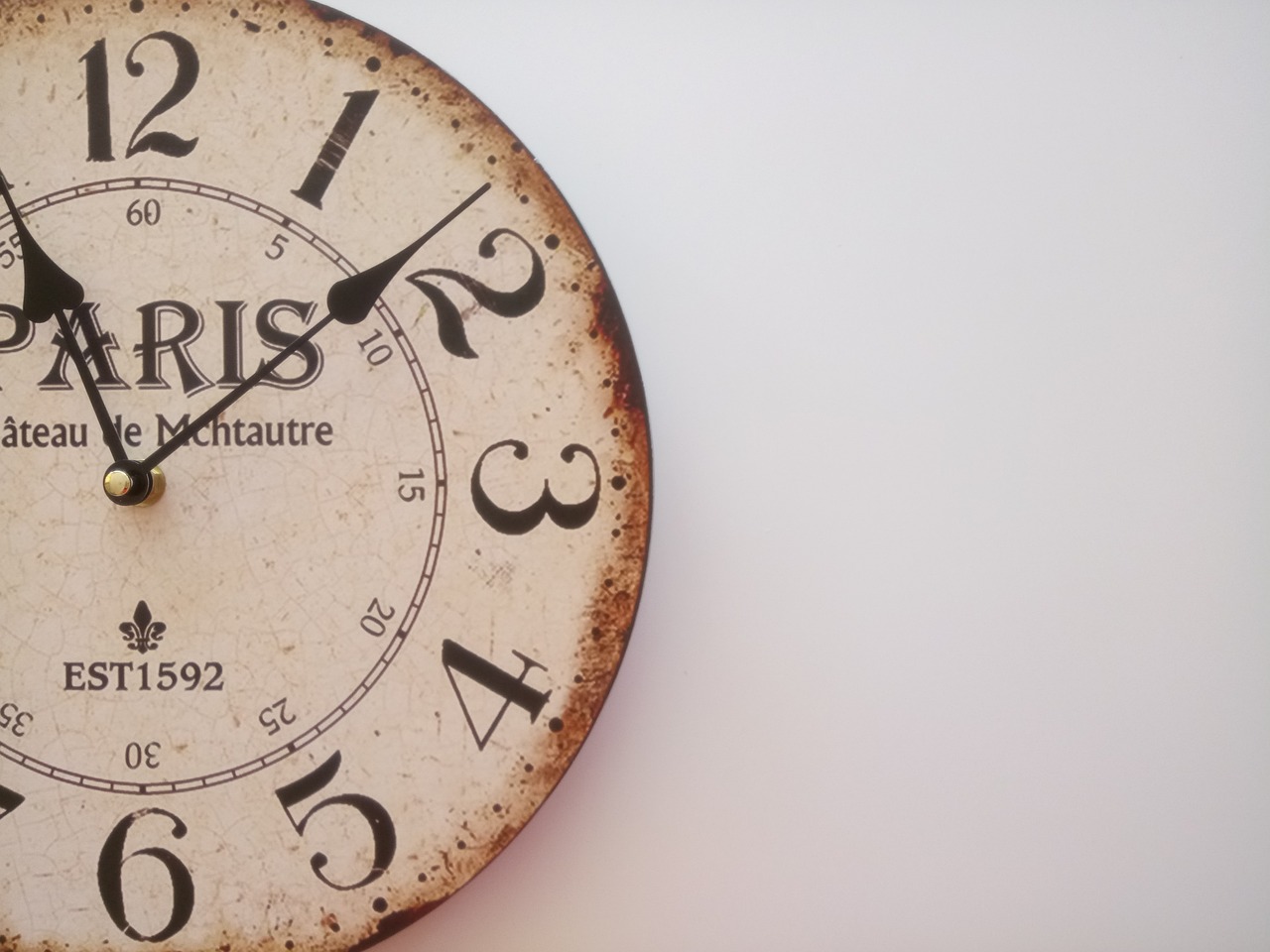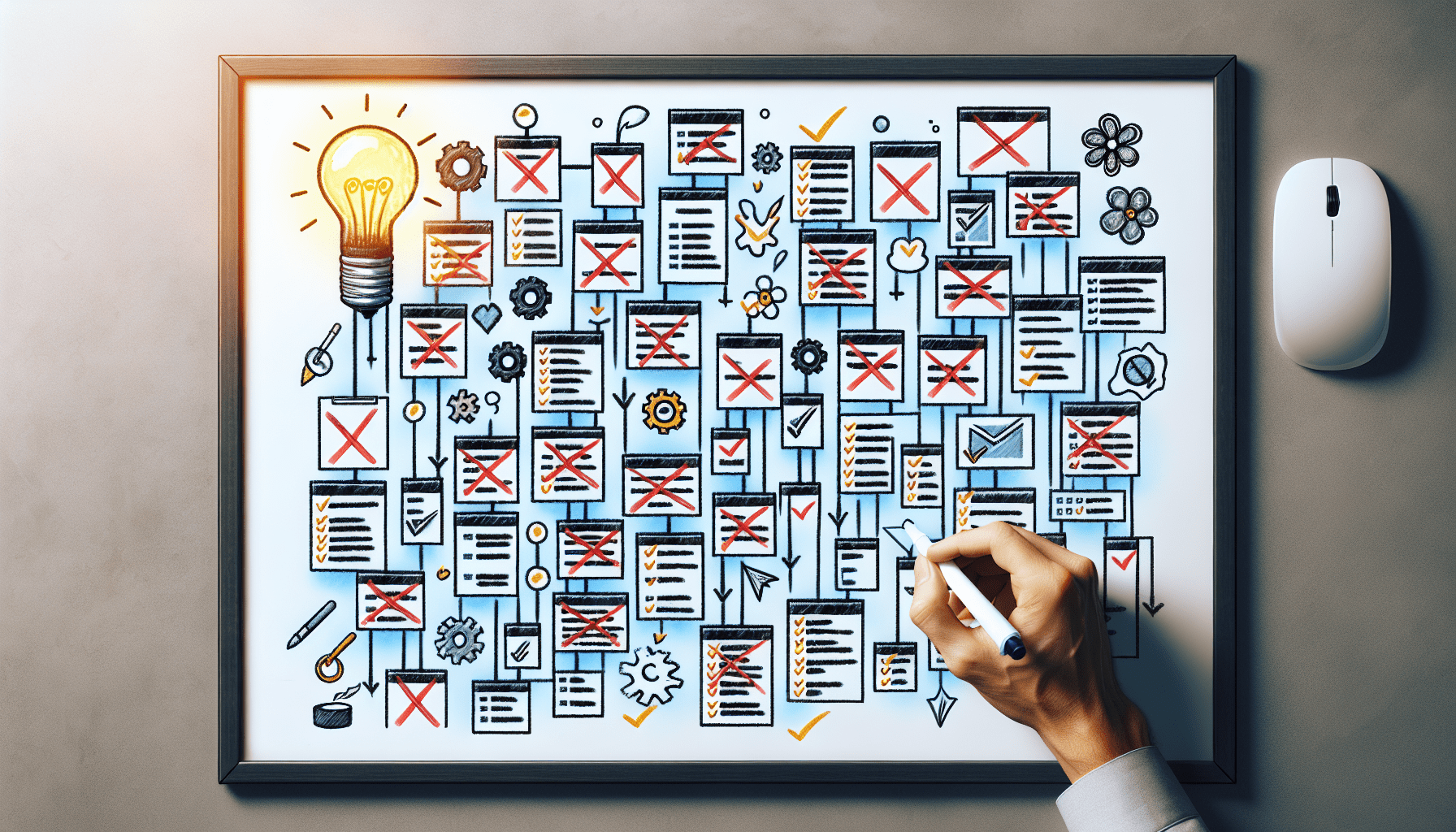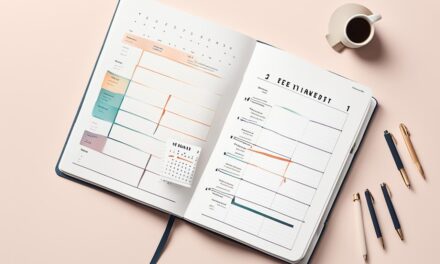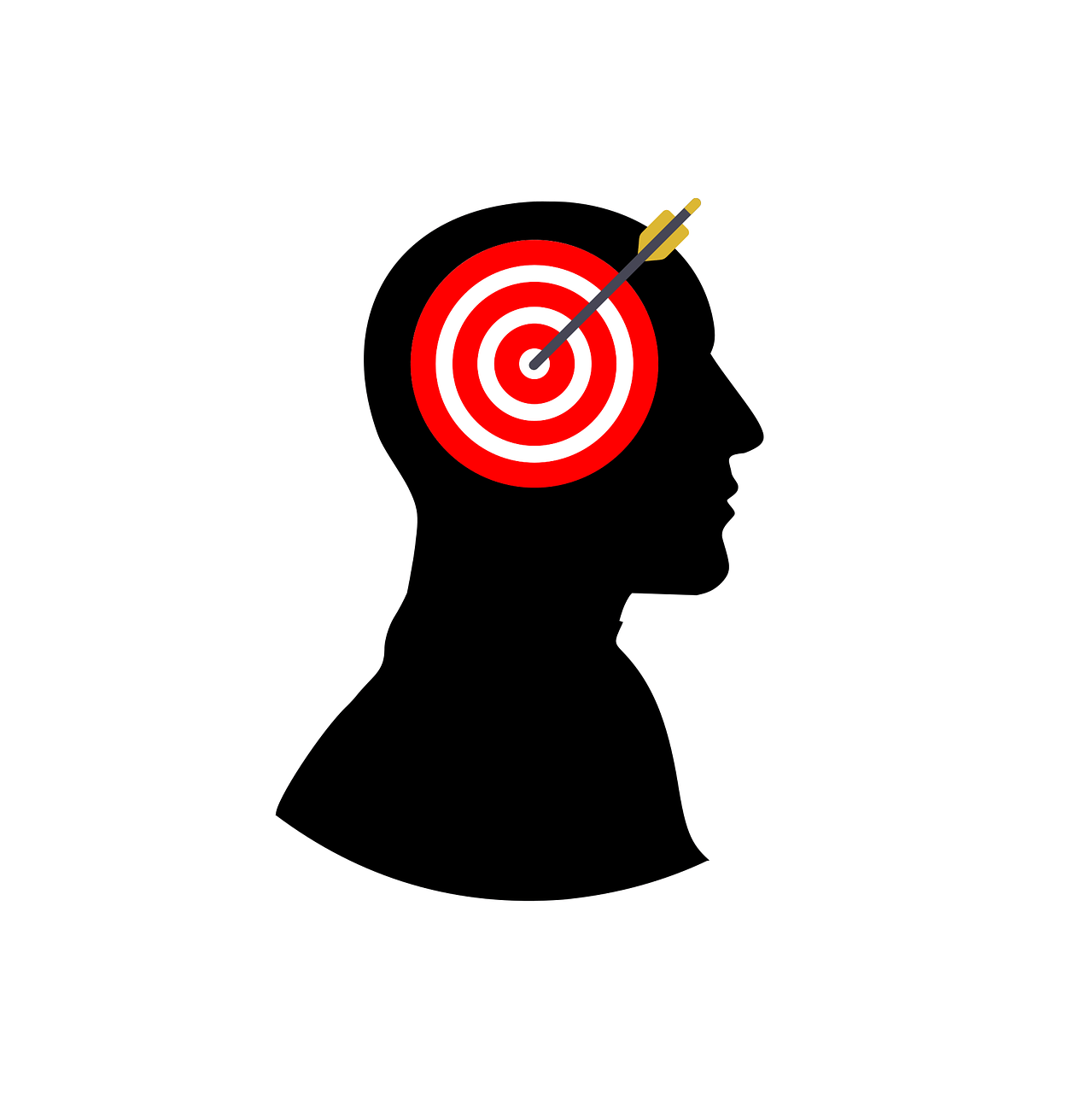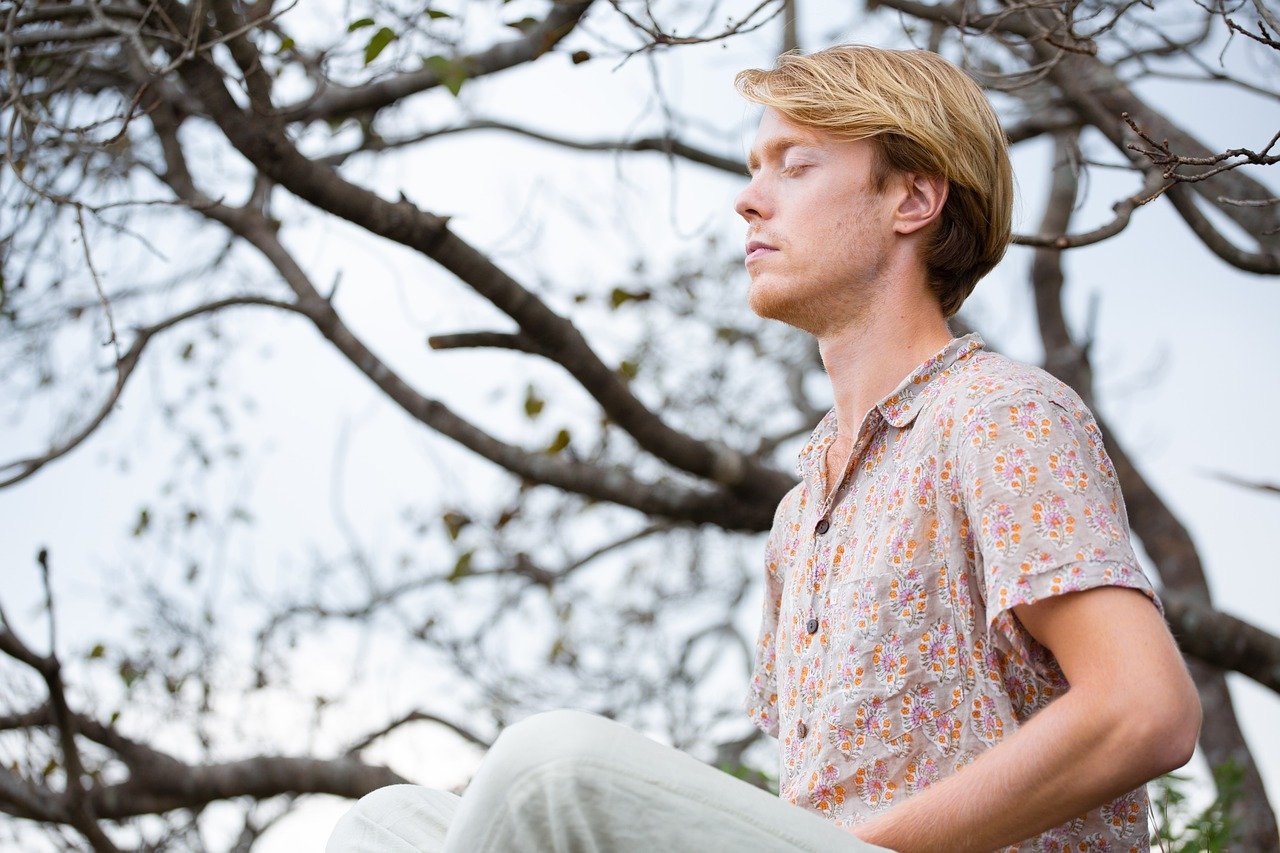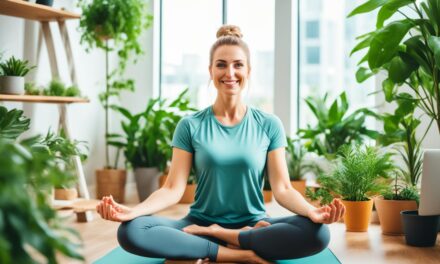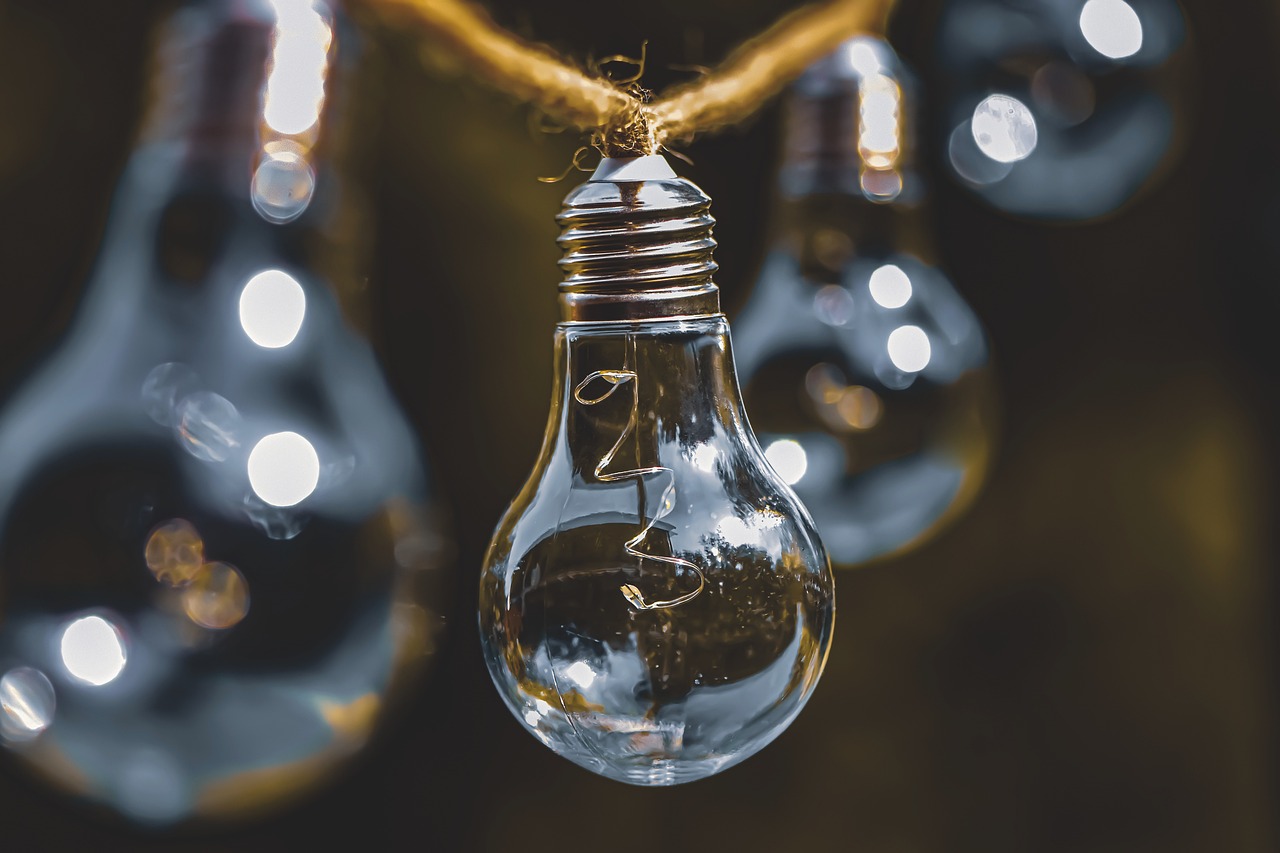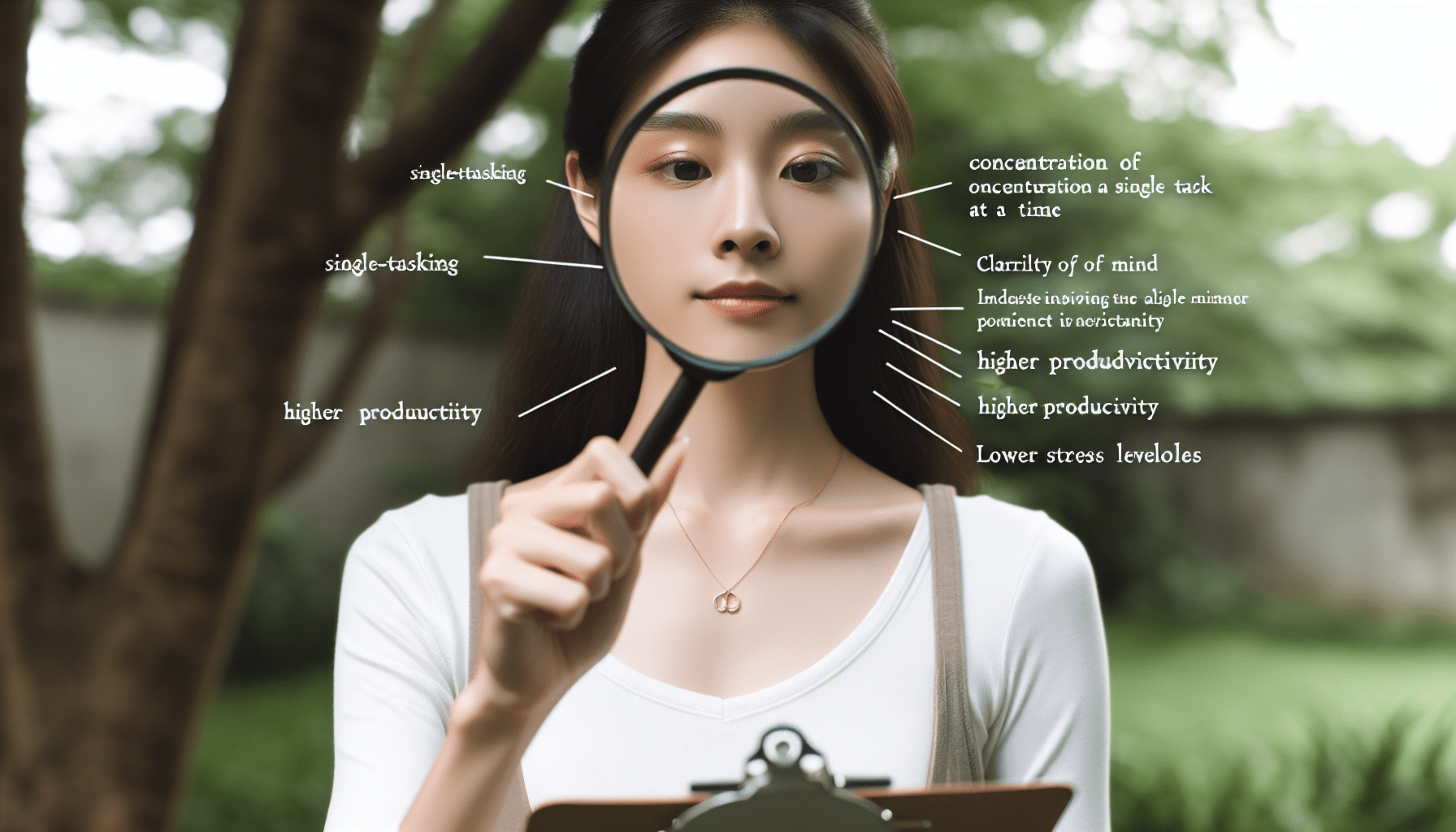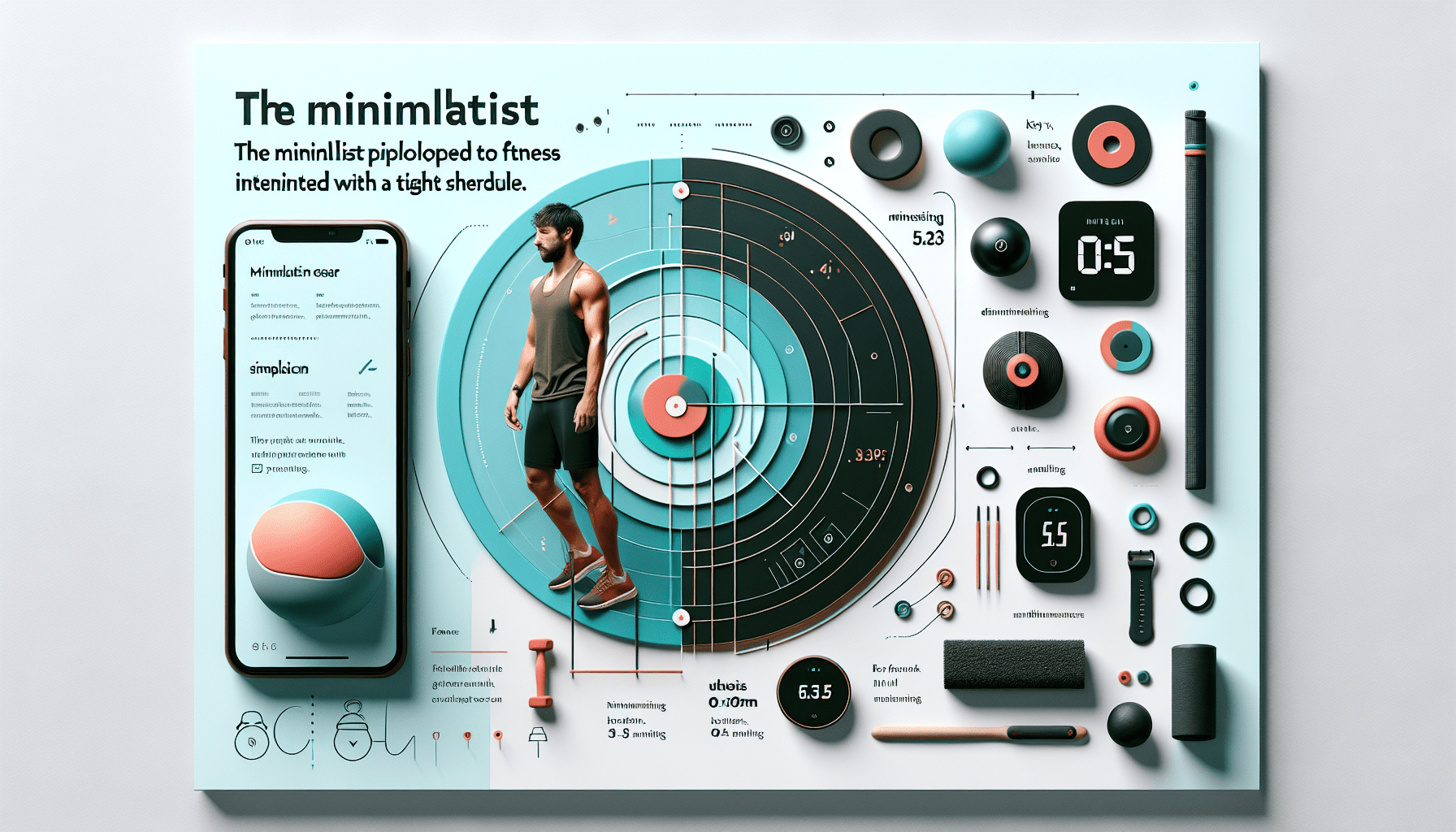
The Joy Of Less: A Guide To Minimalist Living

Discover the transformative power of living a minimalist lifestyle with “The Joy Of Less: A Guide To Minimalist Living.” This insightful read offers practical advice, real-life case studies, and easy-to-follow guides on simplifying your daily routines, decluttering your workspaces, and embracing minimalist practices to enhance your productivity. Whether you’re looking to create more space in your home, declutter your mind, or find newfound joy in simplicity, this guide will empower you to live with less and embrace the beauty of minimalism. Get ready to unlock a world of freedom, peace, and fulfillment through the art of minimalist living.
Why Choose Minimalist Living
In today’s fast-paced and materialistic world, the concept of minimalist living has gained significant attention. Minimalism is a lifestyle that focuses on simplicity, intentionality, and removing unnecessary distractions from your life. By embracing minimalism, you can experience a wide range of benefits that contribute to a better quality of life. From reduced stress and anxiety to increased focus and productivity, and from creating more meaningful experiences to simplifying daily routines – minimalist living can truly transform your life for the better.

Benefits of Minimalist Living
Reduced Stress and Anxiety
One of the key benefits of minimalist living is the reduction of stress and anxiety. When our physical and mental spaces are cluttered with unnecessary belongings and distractions, it can create a constant state of overwhelm. By decluttering and simplifying our environment, we can create a sense of calm and tranquility. Minimalist living allows us to focus on what truly matters and eliminates the constant need to manage and organize excessive possessions.
Increased Focus and Productivity
Minimalism can significantly enhance your focus and productivity. When you declutter your physical space, you remove visual distractions that can impede your concentration. Additionally, by simplifying your daily routines and automating repetitive tasks, you free up mental energy that can be directed towards more important endeavors. With fewer distractions and a clear mind, you can focus on achieving your goals and being more productive in all areas of your life.
Creating More Meaningful Experiences
By embracing minimalism, you can shift your focus from material possessions to more meaningful experiences. Minimalist living encourages you to prioritize experiences over things, allowing you to create lasting memories and cultivate deeper connections with others. Instead of acquiring more possessions that eventually lose their appeal, you can invest your time and energy in activities such as travel, hobbies, and spending quality time with loved ones.
Decluttering Your Physical Environment
Understanding the Importance of Decluttering
Decluttering is an essential aspect of embracing minimalism. It involves systematically going through your belongings and removing items that no longer serve a purpose or bring you joy. Decluttering helps create physical and mental space for the things that truly matter to you. It allows you to let go of the excess and develop a deeper appreciation for the items that you choose to keep.
Getting Started with Decluttering
To begin the decluttering process, start by setting clear goals and establishing a plan. Break down your home into smaller areas, such as individual rooms or sections, and tackle them one at a time. Sort your belongings into categories such as keep, donate, sell, or discard. As you go through each item, ask yourself if it truly adds value to your life or if it is merely taking up space. Be honest with yourself and let go of items that no longer serve a purpose.
Organizing and Categorizing Belongings
Once you have decluttered, organizing and categorizing your belongings becomes much easier. Invest in storage solutions that align with your minimalist goals, such as bins, shelves, or drawer dividers. Focus on creating a system that is easy to maintain and allows you to locate items quickly. Categorize belongings based on their function or frequency of use, and ensure that everything has a designated place. Keeping your physical space organized promotes a sense of calm and makes daily life more efficient.
Letting Go of Sentimental Items
One of the biggest challenges in decluttering is letting go of sentimental items. These possessions often hold memories and emotional attachments. However, minimalist living encourages you to appreciate the memories and let go of the physical objects. Take time to reflect on the emotions and memories associated with each item. Consider keeping only those sentimental items that truly bring you joy and find creative ways to preserve the memories without cluttering your space.
Adopting a Minimalist Wardrobe
Your wardrobe is a significant area where minimalism can be applied. Adopting a minimalist wardrobe means curating a collection of clothing items that you love and wear regularly. Start by evaluating each piece of clothing and asking yourself if it aligns with your personal style and goals. Remove items that no longer fit or bring you joy, and focus on building a versatile and timeless wardrobe with fewer, high-quality pieces. By reducing decision fatigue in the morning and maintaining a clutter-free closet, you can start each day feeling confident and empowered.
Designing a Minimalist Living Space
Creating a minimalist living space involves intentional design choices that prioritize simplicity and functionality. Start by removing unnecessary furniture and decor, leaving only the essentials. Embrace clean lines, neutral colors, and uncluttered surfaces. Incorporate storage solutions that hide away clutter and maintain a sense of minimalism. Keep the space open and airy, allowing natural light to flow in. By designing your living space with minimalism in mind, you can create a calm and inviting environment that supports your overall well-being.

Simplifying Daily Routines
Streamlining Your Morning Routine
A hectic morning routine can set a stressful tone for the rest of the day. By streamlining your morning routine, you can start your day on a positive note. Identify areas where you can save time, such as preparing breakfast or selecting an outfit, by making decisions the night before. Create a consistent routine that includes self-care activities such as meditation or exercise. By simplifying your morning routine, you can reduce decision fatigue and set a productive tone for the day ahead.
Creating an Efficient Meal Planning System
Meal planning is a task that can consume a significant amount of time and mental energy. By creating an efficient meal planning system, you can simplify this process and make healthier choices. Start by building a repertoire of simple yet nutritious recipes. Plan your meals for the week, create a shopping list, and do your grocery shopping in one go. Consider batch cooking and prepping meals in advance to save time during busy weekdays. By streamlining your meal planning, you can reduce stress and ensure that you have nourishing meals readily available.
Automating Repetitive Tasks
Repetitive tasks can be time-consuming and take away precious moments from more meaningful activities. Look for opportunities to automate these tasks and reclaim your time. Utilize technology, such as scheduling software or home automation systems, to simplify and streamline your routine. Automate bill payments, cleaning schedules, or even grocery shopping. By automating repetitive tasks, you can create more room for activities that align with your values and bring you joy.
Minimizing Decision Fatigue
Studies have shown that the more decisions we make throughout the day, the more our decision-making ability diminishes. Minimizing decision fatigue can significantly improve your daily life. Consider establishing a capsule wardrobe, where you have a limited number of outfit options to choose from. Create a meal plan or a consistent menu for certain days of the week. By reducing the number of decisions you have to make, you can reserve your mental energy for decisions that truly matter.
Developing a Minimalist Cleaning Routine
Cleaning can often feel like an overwhelming task, especially if you have a cluttered living space. Develop a minimalist cleaning routine that allows you to maintain a tidy environment with minimal effort. Start by decluttering and organizing your belongings, so that cleaning becomes more efficient. Create a schedule for daily, weekly, and monthly cleaning tasks. Break down larger cleaning projects into manageable chunks, and enlist the help of family members or hire a professional if needed. By incorporating small daily cleaning habits, you can keep your living space clean and clutter-free without feeling overwhelmed.
Embracing Minimalist Workspaces
Clearing Physical and Digital Clutter
A cluttered workspace can hinder your productivity and create unnecessary stress. Clearing physical clutter involves organizing your desk, removing excessive items, and keeping only essentials within reach. Create designated spaces for items such as pens, papers, and electronics. Digital clutter, on the other hand, includes excessive files, notifications, and emails. Organize your digital files into folders, unsubscribe from unnecessary emails, and manage notifications to reduce distractions. By clearing physical and digital clutter, you can create a clean and focused workspace that promotes productivity and creativity.
Optimizing Your Physical Workspace
Optimizing your physical workspace involves designing a space that supports your work and enhances your well-being. Invest in a comfortable chair, an ergonomic desk setup, and adequate lighting. Personalize your workspace with a few meaningful items such as photographs or plants. Ensure that everything you need for work is within arm’s reach, reducing the need to search for items and minimizing distractions. By optimizing your physical workspace, you can improve your posture, reduce physical strain, and create an environment conducive to productivity.
Establishing a Minimalist Digital Setup
In today’s digital age, it is essential to create a minimalist digital setup to stay organized and focused. Start with decluttering your digital files and deleting unnecessary documents, old photos, or duplicated files. Organize your files into folders that make sense to you and utilize cloud storage solutions for easy access. Simplify your digital workspace by removing unnecessary desktop icons and widgets. Organize your browser bookmarks into relevant categories and delete bookmarks that are no longer useful. By establishing a minimalist digital setup, you can reduce digital distractions and work more efficiently.
Implementing Minimalist Productivity Tools
Minimalist living is not about eliminating all tools; rather, it involves utilizing tools that streamline your workflow. Implement minimalist productivity tools that enhance your efficiency and organization. Look for tools that integrate multiple functions, reducing the need for separate apps. Use task management applications that prioritize simplicity and allow you to focus on essential tasks. Utilize note-taking tools that sync across devices and enable easy organization. By carefully selecting and utilizing minimalist productivity tools, you can streamline your work processes and enhance your productivity.
Creating Mindful Work Habits
While the physical and digital aspects of a workspace are crucial, creating mindful work habits is equally important. Mindfulness involves being fully present and engaged in the task at hand, promoting focus and productivity. Practice single-tasking by devoting your full attention to one task at a time, avoiding multitasking. Take short breaks throughout the day to recharge and reset your focus. Establish routines and rituals that signal the start and end of your workday, helping you transition between work and personal life. By embracing mindful work habits, you can increase your efficiency and find greater satisfaction in your work.
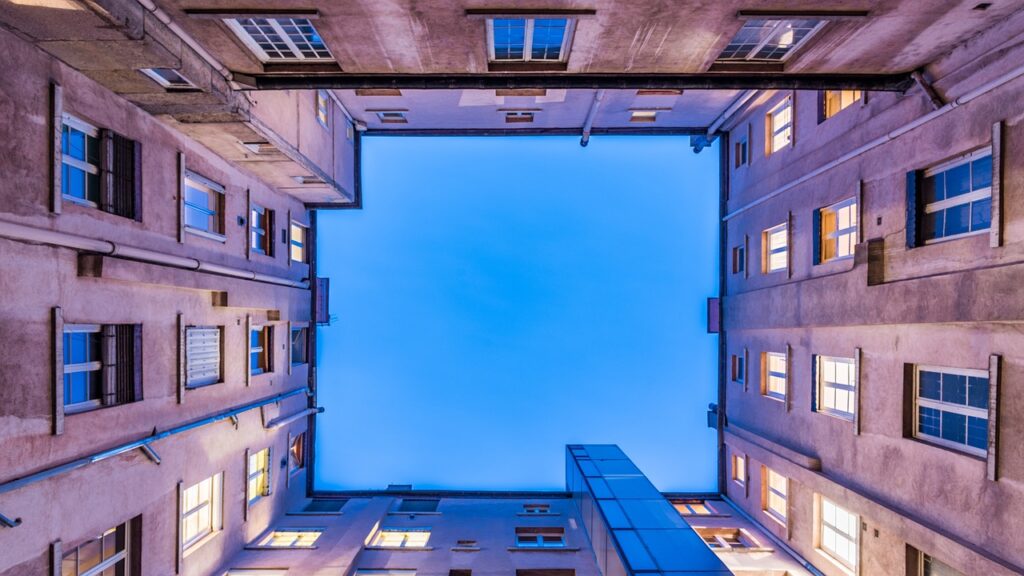
Practicing Mindful Consumption
Understanding the Impact of Overconsumption
Overconsumption is a prevalent issue in modern society, leading to environmental degradation, financial stress, and a lack of fulfillment. Understanding the impact of overconsumption is essential to adopting a minimalist lifestyle. Reflect on the societal pressures and marketing tactics that drive excessive consumption. Consider the environmental consequences of disposable and fast-fashion industries. Recognize how overconsumption contributes to clutter, waste, and a never-ending cycle of acquiring more. By understanding the impact of overconsumption, you can make conscious choices to break free from the cycle and embrace minimalism.
Developing a Minimalist Shopping Mindset
Developing a minimalist shopping mindset involves changing your relationship with shopping and material possessions. Shift your focus from acquiring more to intentional and mindful consumption. Adopt a mindset of quality over quantity, considering the longevity and usefulness of each purchase. Prioritize needs over wants, avoiding impulse purchases and embracing a more thoughtful and intentional approach. Practice delayed gratification by waiting before making a purchase, ensuring that it truly aligns with your values and needs. By developing a minimalist shopping mindset, you can significantly reduce unnecessary spending and clutter in your life.
Making Intentional Purchasing Decisions
Minimalism encourages making intentional purchasing decisions that align with your values and goals. Before making a purchase, ask yourself a series of questions: Do I truly need this item? Will it add value to my life? Is it aligned with my values? Can I afford it without compromising my financial well-being? By critically evaluating each purchase, you can avoid impulse buys and adopt a more intentional and mindful approach to consumption. Making intentional purchasing decisions allows you to curate a collection of items that truly enhance your life and reduce clutter.
Emphasizing Quality over Quantity
A key principle of minimalism is emphasizing quality over quantity. Rather than accumulating a large number of possessions, focus on investing in high-quality items that last. Consider the long-term value and durability of each purchase. Opt for timeless designs that do not go out of style. By choosing quality over quantity, you can reduce waste, save money in the long run, and surround yourself with items that hold value and bring you joy.
Avoiding Impulsive Buying
Impulsive buying can be a challenging habit to break, but it is crucial in embracing minimalism. Avoid succumbing to impulse purchases by practicing mindfulness and self-awareness. Before making a purchase, take a moment to pause and evaluate your motivations. Ask yourself if the purchase aligns with your goals and values or if it is merely a temporary desire. Implement a cooling-off period, such as waiting 24 hours before finalizing a purchase. By avoiding impulsive buying, you can make conscious choices that align with your minimalist lifestyle and reduce unnecessary clutter in your life.
Minimalist Travel and Leisure
Packing Essentials for Minimalist Travel
Minimalist travel involves packing light and efficiently, allowing you to focus on experiences rather than possessions. Prioritize versatile clothing items that can be mixed and matched. Choose lightweight and multifunctional travel gear, such as a travel towel or a collapsible water bottle. Minimize toiletries by opting for travel-sized or solid products. Plan your outfits in advance and pack only what is necessary, considering the climate and activities. By packing essentials for minimalist travel, you can experience the freedom and flexibility of exploring new places with ease.
Planning Meaningful Travel Experiences
Minimalist travel is not just about reducing the amount of luggage; it’s about planning meaningful experiences. Prioritize activities and destinations that align with your interests and values. Research and plan ahead to ensure you make the most of your time. Avoid overloading your itinerary with too many activities and leave room for spontaneity and relaxation. Engage with the local culture, interact with the locals, and immerse yourself in authentic experiences. By planning meaningful travel experiences, you can create lasting memories and cultivate a sense of fulfillment.
Exploring Minimalist Leisure Activities
Incorporating minimalist leisure activities into your daily life can help you unwind and find balance. Engage in activities that require minimal equipment or resources, such as reading, hiking, or yoga. Simplify your hobbies by focusing on a few that truly bring you joy and allow you to express your creativity. Spend time in nature, cultivating a deeper connection with the environment. Strive for activities that promote mindfulness and present-moment awareness, such as meditation or journaling. By exploring minimalist leisure activities, you can find solace in simplicity and recharge your mind and body.
Digital Detox and the Art of Being Present
In a digital age, it is essential to disconnect and engage in a digital detox regularly. Commit to designated periods where you disconnect from technology and focus on being present. Create boundaries for technology use, such as implementing a no-phone policy during meals or dedicating a specific time for social media. Engage in activities that promote mindfulness, such as practicing deep breathing or going for a walk in nature. By embracing the art of being present and disconnecting from technology, you can cultivate a deeper sense of gratitude and enhance your overall well-being.
Balancing Work and Leisure Time
Balancing work and leisure time is crucial for maintaining a fulfilling and well-rounded life. Strive for a healthy work-life balance by setting clear boundaries between work and personal life. Establish designated leisure time for activities that bring you joy and help you recharge. Avoid overworking or bringing work into your leisure time. Prioritize self-care, hobbies, and spending quality time with loved ones. By finding a balance between work and leisure time, you can nurture all aspects of your life and experience a greater sense of fulfillment.
Building Minimalist Habits
Setting Goals for Minimalist Living
Setting goals is an essential part of adopting a minimalist lifestyle. Reflect on what you hope to achieve through minimalism and determine your priorities. Set specific and measurable goals, such as decluttering a specific area within a certain timeframe or reducing your consumption by a certain percentage. Break down your goals into smaller steps and celebrate your achievements along the way. By setting goals for minimalist living, you can stay focused and motivated on your journey towards a simpler and more intentional life.
Building a Minimalist Mindset
Building a minimalist mindset involves shifting your perspective and reevaluating your relationship with possessions. Challenge the societal norms and expectations surrounding materialism and consumerism. Focus on gratitude and contentment, appreciating what you have rather than constantly striving for more. Practice mindfulness and self-awareness to identify the triggers that lead to excessive consumption or clutter. Adopt an attitude of simplicity and intentionality in all aspects of your life. By building a minimalist mindset, you can cultivate a deeper sense of fulfillment and joy.
Practicing Gratitude and Contentment
Gratitude and contentment are fundamental to the minimalist lifestyle. Shift your focus from what you lack to what you already have. Take time each day to express gratitude for the things that bring you joy, the experiences you’ve had, and the people in your life. Practice contentment by appreciating the present moment and finding satisfaction in the simple pleasures of life. By practicing gratitude and contentment, you can cultivate a sense of abundance and reduce the desire for excessive consumption.
Finding Joy in Experiences, Not Possessions
Minimalism encourages finding joy in experiences rather than possessions. Shift your mindset from acquiring more things to embracing experiences that bring you joy and fulfillment. Prioritize activities that create lasting memories, such as travel, spending time in nature, or engaging in hobbies. Focus on connecting with loved ones and building meaningful relationships. Explore new interests and engage in activities that challenge and inspire you. By finding joy in experiences rather than possessions, you can cultivate a rich and fulfilling life.
Continuously Evaluating and Decluttering
Minimalism is an ongoing journey that requires continuous evaluation and decluttering. Regularly reassess your belongings and ask yourself if they align with your current values and goals. Declutter spaces that tend to accumulate clutter, such as closets or storage areas, on a regular basis. Be mindful of bringing new items into your life, considering their value and purpose. Incorporate regular decluttering sessions into your routine to maintain a clutter-free and minimalist lifestyle. By continuously evaluating and decluttering, you can ensure that your environment and possessions align with your minimalist ideals.
Minimalism and Relationships
Communicating Minimalist Values with Loved Ones
When adopting minimalism, it is essential to communicate your values with loved ones. Explain the reasons behind your decision to embrace minimalism and the benefits you have experienced. Help them understand that minimalism is about prioritizing experiences and relationships over material possessions. Be open to answering questions and addressing concerns. Involve your loved ones in the decluttering process and encourage them to explore minimalism at their own pace. By effectively communicating your minimalist values, you can foster understanding and support among your relationships.
Navigating Conflicts around Material Possessions
Conflicts around material possessions can arise when adopting a minimalist lifestyle, especially when others in your life have different priorities. Approach these conflicts with empathy and understanding. Focus on the importance of experiences and relationships rather than the value of possessions. Find compromises that respect the needs and values of all parties involved. Focus on the positive aspects of minimalism, such as reduced stress and increased well-being. By navigating conflicts around material possessions with open communication and empathy, you can maintain healthy relationships while staying true to your minimalist values.
Creating Minimalist Social Experiences
Embracing minimalism does not mean sacrificing social experiences; rather, it encourages designing social experiences with intentionality and simplicity. Plan activities that promote connection and create meaningful memories. Host potlucks or game nights instead of expensive dinners out. Explore free or low-cost local attractions and events. Focus on quality time and conversations with loved ones rather than material gifts. By creating minimalist social experiences, you can strengthen your relationships and foster a sense of fulfillment without the need for excessive spending or material possessions.
Supporting Each Other in Embracing Minimalism
Supporting each other in embracing minimalism can be a powerful aspect of the journey. Seek support from loved ones who share your values or are interested in minimalism. Encourage and inspire one another through discussions, sharing resources or experiences, and celebrating milestones. Partner with a friend or family member to declutter or organize spaces together. Share tips, challenges, and success stories to keep each other motivated. By supporting each other in embracing minimalism, you can cultivate a sense of community and make the journey more enjoyable.
Teaching Minimalism to Children
Introducing Children to Minimalist Concepts
Teaching minimalism to children involves introducing them to the concept of living with intention and simplicity. Start by explaining the value of experiences and relationships over material possessions. Encourage them to question the importance of possessions and the impact of overconsumption. Foster mindfulness and gratitude by engaging in activities such as journaling or expressing daily gratitude. Lead by example, demonstrating the principles of minimalism in your own life. By introducing children to minimalist concepts, you can instill lifelong values that promote mindful and intentional living.
Encouraging Mindful Consumption Habits
Teaching children mindful consumption habits is crucial in a consumerist society. Educate them about the environmental impact of overconsumption and the importance of making conscious purchasing decisions. Encourage them to consider whether they truly need an item or if it is a temporary desire. Teach them the value of money and saving for meaningful experiences rather than impulsive purchases. Involve them in the decluttering process and teach them to appreciate quality over quantity. By encouraging mindful consumption habits, you can help children develop a healthier relationship with material possessions.
Simplifying Children’s Schedules and Activities
Children today often face overwhelming schedules and a lack of free playtime. Simplifying their schedules and activities is essential for their well-being and development. Prioritize quality over quantity when it comes to extracurricular activities, ensuring that children have enough free time for unstructured play and relaxation. Avoid overloading their schedules with back-to-back activities. Encourage creativity and imagination through open-ended play and simple toys. By simplifying children’s schedules and activities, you can foster their independence, creativity, and overall well-being.
Promoting Creativity and Imagination
Minimalism encourages the promotion of creativity and imagination in children. Provide open-ended toys and art supplies that allow for imaginative play and self-expression. Create a designated space for creativity, such as an art corner or a playroom. Encourage children to think creatively and problem-solve through open-ended questions and activities. Limit screen time and foster their ability to entertain themselves through imaginative play. By promoting creativity and imagination, you can cultivate a love for simplicity and foster a lifelong appreciation for creativity.
Teaching Gratitude and Contentment
Teaching children gratitude and contentment is a key aspect of minimalism. Encourage them to express gratitude for the people, experiences, and possessions they have in their lives. Develop a gratitude practice, such as sharing three things they are grateful for each day. Teach children mindfulness and contentment by focusing on the present moment and appreciating the simple joys in life. Encourage them to find satisfaction in experiences and relationships rather than constantly striving for more. By teaching gratitude and contentment, you can help children develop a positive and grateful mindset.
Minimalism for Better Mental Health
Reducing Mental Clutter and Overwhelm
Minimalism has a significant impact on mental health by reducing mental clutter and overwhelm. Decluttering physical spaces translates into decluttering the mind. A clear and organized environment helps to alleviate stress and increase mental clarity. By removing distractions and unnecessary possessions, you create space for thoughts and ideas to flow freely. Simplifying daily routines and minimizing decision fatigue also contribute to a calmer and more focused mind. By reducing mental clutter and overwhelm, you can enhance your overall mental well-being.
Boosting Mindfulness and Self-Awareness
Minimalism and mindfulness go hand in hand. Minimalism encourages you to be present and fully engaged in the moment. By simplifying your environment and routines, you can cultivate mindfulness in daily life. Engage in mindfulness practices such as meditation or deep breathing exercises. Develop self-awareness by reflecting on your thoughts, emotions, and behaviors. Notice how your possessions and material desires impact your well-being. By boosting mindfulness and self-awareness, you can gain a deeper understanding of yourself and experience enhanced mental and emotional well-being.
Finding Inner Peace and Calm
Inner peace and calm are sought-after states in today’s busy world. Minimalism provides a path to finding and cultivating these states. By simplifying your life, you reduce the external noise and distractions that contribute to stress and anxiety. Embracing minimalism allows you to let go of the need for constant consumption and comparison, finding contentment in the present moment. Cultivate practices such as meditation, journaling, or spending time in nature that promote inner peace and calm. By finding inner peace and calm through minimalism, you can experience a profound sense of well-being.
Sustainable Self-Care Practices
Self-care is essential for overall well-being and plays a crucial role in a minimalist lifestyle. Embrace sustainable self-care practices that prioritize your physical, mental, and emotional health. Engage in activities that recharge and replenish you, such as exercise, journaling, or spending time in nature. Prioritize quality rest and sleep as part of your self-care routine. Practice saying no and setting boundaries to protect your time and energy. By adopting sustainable self-care practices, you can nurture yourself and ensure that you have the resilience to meet the demands of daily life.
Creating a Minimalist Self-Care Routine
A minimalist self-care routine involves simplifying your self-care practices and focusing on what truly nourishes your mind, body, and soul. Evaluate your current self-care activities and identify those that truly bring you joy and rejuvenation. Pare down your self-care routine to the essentials, eliminating activities that feel more like obligations than true self-care. Establish a schedule or routine that incorporates regular self-care practices into your daily or weekly life. By creating a minimalist self-care routine, you can cultivate a deep sense of well-being and ensure that you make time for yourself amidst the busyness of life.
In conclusion, choosing to embrace minimalist living offers numerous benefits for your physical, mental, and emotional well-being. By decluttering your physical environment, simplifying daily routines, embracing minimalist workspaces, practicing mindful consumption, enjoying minimalist travel and leisure, building minimalist habits, nurturing relationships, teaching minimalism to children, and prioritizing mental health, you can create a meaningful and intentional life. Embrace the joy of less and discover the true essence of what matters most in your life.

